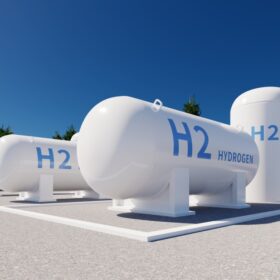Australia's New National Hydrogen Strategy: A Step Towards Green Energy Leadership
Key Ideas
- The new National Hydrogen Strategy in Australia aims to produce green hydrogen competitively and guide investments, signaling ambitious green energy goals to the world.
- It sets production targets for green hydrogen, aiming for 500,000 tonnes per year by 2030 and 15 million tonnes by 2050, with more ambitious stretch targets beyond.
- The strategy prioritizes industries like iron, alumina, and ammonia for hydrogen use, while addressing challenges such as transportation costs and community acceptance.
- Australia's focus on green hydrogen aligns with international partnerships, including a significant deal with Germany, but challenges remain in funding, infrastructure, and policy alignment.
The new National Hydrogen Strategy in Australia, unveiled by Federal Climate Change and Energy Minister Chris Bowen, outlines a vision to produce green hydrogen at a competitive cost and lead in the global transition to sustainable energy sources. Building on the initial strategy released in 2019, the updated version sets ambitious production targets for green hydrogen, aiming to scale up to 500,000 tonnes annually by 2030 and 15 million tonnes by 2050. The strategy also includes more challenging stretch targets of 1.5 million tonnes by 2030 and 30 million tonnes by 2050, requiring significant industry growth and new customer markets.
Recognizing the potential of hydrogen in various sectors, the strategy prioritizes industries like iron, alumina, and ammonia for hydrogen utilization to create new export opportunities and cut emissions. However, challenges persist, including the high costs of green hydrogen production, transportation logistics, and community acceptance. While the strategy aims to address these hurdles, questions remain on policy coherence, funding allocation, and infrastructure development.
The document highlights collaborations with European nations, such as a substantial deal with Germany, indicating Australia's intent to tap into international markets for green hydrogen. Despite these positive steps, concerns linger about the effectiveness of recent government measures like the Hydrogen Headstart grants program and tax credits in aligning with the strategy's targets and priorities.
Furthermore, community engagement and safety considerations are emphasized in the strategy, underscoring the need for a balanced approach to ensure societal acceptance and economic benefits from hydrogen technologies. As Australia navigates its path towards a greener energy future, the success of the National Hydrogen Strategy hinges on clear policy direction, robust investments, and coordinated efforts to overcome existing challenges in the hydrogen industry.
Topics
Projects
Government Policy
Energy Transition
Environmental Sustainability
Renewable Resources
Economic Growth
Industry Development
Technology Advancement
Export Markets
Latest News
